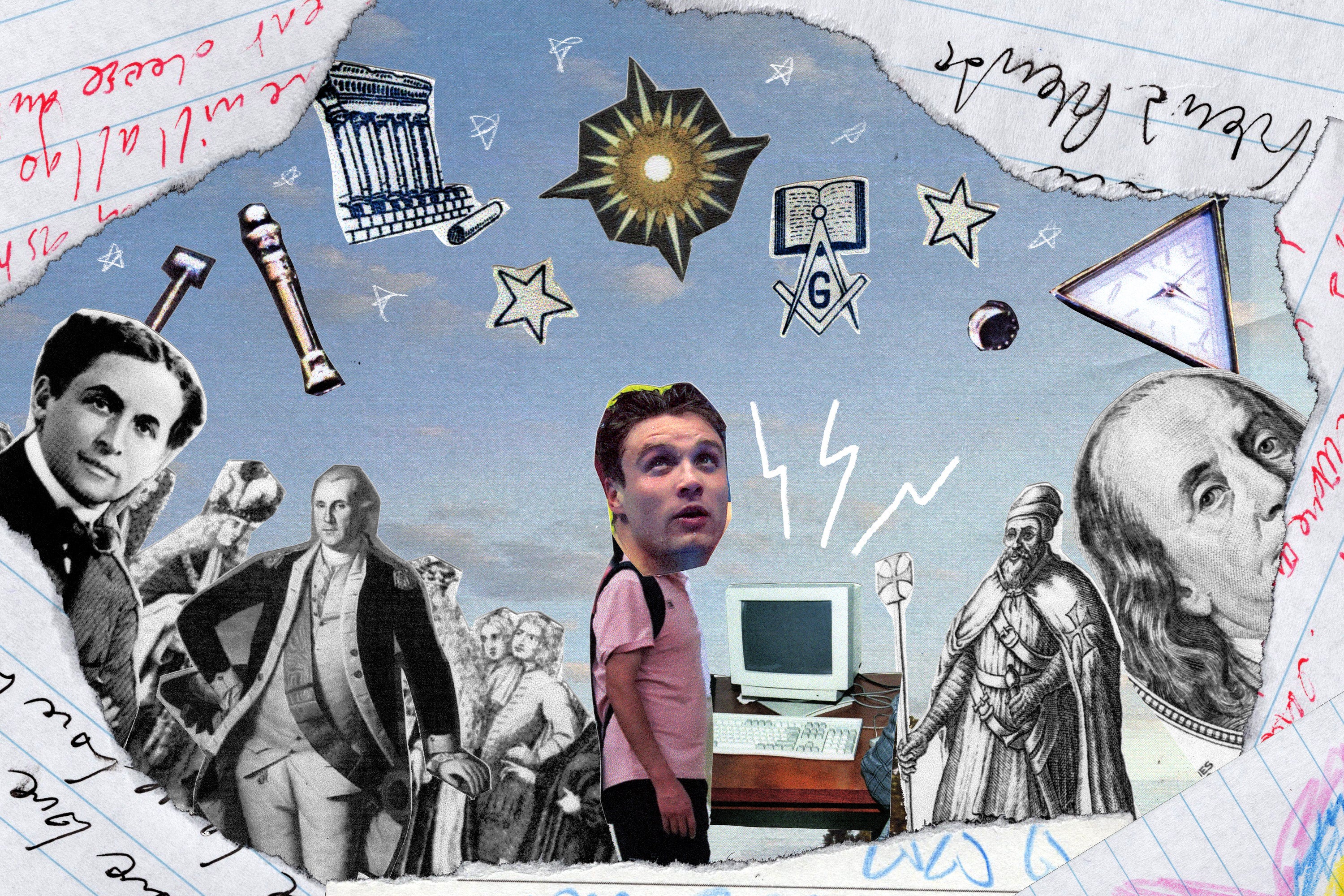Understanding the Practical Benefit of Joining Freemason for Every Member
Understanding the Practical Benefit of Joining Freemason for Every Member
Blog Article
Exploring the Mysteries of the Freemason: What You Required to Know
The Freemason, a term usually shrouded in intrigue and controversy, represents a complex tapestry of historical fact and modern myth. Established in the late 18th century, this secret culture was initially rooted in the Enlightenment's ideals but has since become synonymous with conspiracy theories concerning elite control. As we browse the beginnings, vital numbers, and the raw comparison in between misconception and reality, one should take into consideration how these stories influence modern understandings of power and secrecy. What may be exposed through a closer examination of these elements could challenge long-held presumptions regarding the shadows that linger in our society.
Beginnings of the Freemason
The origins of the Freemason are soaked in a mix of historic intrigue and ideological fervor. Developed in 1776 in Ingolstadt, Bavaria, by Adam Weishaupt, the group was at first formed as a secret culture focused on advertising Knowledge ideals such as reason, secularism, and the separation of church and state. Weishaupt, a professor of canon regulation, sought to test the prevailing authority of the church and state, which he considered as overbearing establishments stifling intellectual and individual freedom.
The Freemason looked for to hire influential participants from different societal fields, including national politics, academic community, and the arts, to cultivate a network dedicated to these Enlightenment concepts. The culture run under a veil of secrecy, utilizing coded language and routines to shield its members from oppression, particularly offered the repressive environment of the time. Nevertheless, the Freemason dealt with substantial resistance from both governmental authorities and spiritual institutions, which checked out the team as a hazard to their power.
Key Figures and Participants
Who were the critical numbers that shaped the Freemason's early influence and direction? The Bavarian Freemason, founded in 1776 by Adam Weishaupt, arised as a feedback to the oppressive social structures of the time.
Another significant number was Johann Gottlieb Fichte, a noticeable theorist whose concepts on nationalism and education reverberated with the Freemason's objectives. Fichte was not an official participant, his thoughtful bases influenced the team's belief. Additionally, numbers like the writer and philosopher Johann Wolfgang von Goethe were related to the wider intellectual motions of the moment, although their straight involvement with the Freemason continues to be discussed.
These key numbers added to the Freemason's very early direction, pressing the boundaries of political and social idea, while their collective initiatives aimed to test well established norms and cultivate a climate of dynamic change in Europe.
Misconceptions vs. Truth
Lots of false impressions surround the Freemason, commonly blending truth with fiction in such a way that covers its true nature. This secret culture, originally started in 1776 in Bavaria, aimed to promote Knowledge perfects and fight religious and political oppression. The idea that the Freemason continues to apply significant influence over globe events is a misconception. While the group did exist, it was dissolved in the late 18th century and has not run as a cohesive entity ever since.
An additional prevalent misconception is that the Freemason consists of a network of elite individuals controling global affairs. Actually, lots of conspiracy concepts exaggerate the group's value, associating misguided objectives to societal patterns and occasions. dig this This has actually brought about an oversimplified sight of complex issues.

Modern Analyses
Contemporary analyses of the Freemason usually reflect broader societal stress and anxieties and an attraction with privacy and power. This modern-day lens regularly links the Freemason with conspiracy theories that suggest a concealed elite coordinates world events, manipulating governments and economic situations for their very own gain. Such narratives tap into an ingrained question of authority, specifically in times of situation or social turmoil.

In addition, some modern-day analyses mount the Freemason as an allegory for the intricacies of globalization and the interconnectedness of prominent people and companies. This point of view motivates an essential exam of exactly how power characteristics operate in today's world, highlighting the equilibrium in between transparency and secrecy in governance and corporate techniques.
Social Effect and Tradition
Influenced by centuries of intrigue, the cultural impact and heritage of click this site the Freemason extend far past its historical beginnings. This secret society, established in the late 18th century, has actually penetrated numerous aspects of prominent culture, from literary works and film to music and art. The principle of the Freemason has actually developed into an icon of conspiracy theories, often standing for a regarded concealed power manipulating international occasions.
In literature, writers like Dan Brown have woven the Freemason right into complex plots, captivating viewers with styles of secrecy and power. Movies such as "National Prize" and "The Da Vinci Code" even more perpetuate the attraction of the society, blending reality with fiction to develop interesting stories.
The Freemason's influence also expands right into music, with artists referencing the organization to evoke themes of rebellion and social critique. This portrayal has actually contributed to a fascination with the concept of private groups controlling the bars of power, showing societal anxiousness concerning authority and transparency.
Inevitably, the Freemason's tradition is a complex tapestry of misconception and truth, forming assumptions of secrecy and control in contemporary discussion. Its enduring existence in culture highlights humankind's seasonal pursuit for recognizing concealed truths.
Final Thought
The expedition of the Freemason reveals a complex interplay between historic truths and contemporary myth-making. Founded in the Enlightenment era, this culture aimed to test oppressive frameworks, yet its heritage has actually been eclipsed by conspiracy concepts that suggest elite adjustment. Recognizing the differences in between the original suitables and modern interpretations is vital for understanding the enduring fascination with the Freemason and its considerable impact on social stories surrounding power and secrecy in culture.
Report this page